Glass Angels and Data Insects
Source
'Glass Angels and Data Insects' International Symposium on Electronic Art Chicago 22-27th October (1997)
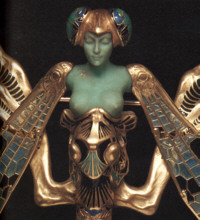
And now Aeneas saw in a side valley a secluded grove with copses of rustling trees where the river Lethe glided along past peaceful dwelling houses. Around it fluttered numberless races and tribes of men, like bees in a meadow on a clear summer day, settling on all the many-coloured flowers and crowding round the gleaming white lilies while the whole plain is loud with their buzzing.
Virgil describes the underworld. The souls of the dead draw from the rivers of forgetfulness to re-format their hard drives and enter a new life back on earth. Virgil, the son of a beekeeper, makes this comparison between human and bee society throughout his verse. As in the Roman ideal, the world of the bee depends on the rule of a single monarch, and members are ready to sacrifice their lives for the whole.
This talk is about the way insect colonies offer themselves up as mirrors for their human hosts. They provide a language for arguing between the needs of the collective and the individual. Like insects themselves, these representations mutate over time and can evolve into exotic models of human behaviour. McLuhan spoke of the mission of humans to ‘fecundate’ technology, and here we’ll examine our evolution into the bees of the electronic world.
We’ll need to fast forward.
Our last stop is the nineteenth century, when insects offered proof of the intricate handiwork carried out by the divine craftsman. Before Darwin revealed otherwise, entomology was a pious pursuit, implying appreciation of the fine print in god’s plan. As a nineteenth-century religious tract, The History of Insects, proclaims: ‘The Lord of hosts is wonderful in counsel, and excellent in working.’ Written from our more worldly view of nature, A.S. Byatt’s Angels and Insects uses the insect kingdom to show the savagery beneath the surface order of Victorian society.
In our time, the theatre of insects has moved from the bench to the screen. On the way, Susan Cohn has produced a liminal series of creatures titled Reflections, which invokes the Lalique dragonfly woman, who will appear at the very end of this talk. These elaborate condom sporrans have wings assembled from rainbow reflective sunglasses, through which human faces turn into bug-eyed screens.
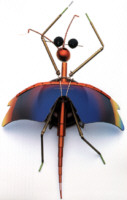 The
screen looms particularly large in the French film Microcosmos.
This is a documentary of pure image—no biology, no sagacious commentator,
just pure screen spectacle. ‘Meet the Beetles!’ as the publicity
proclaims.
The
screen looms particularly large in the French film Microcosmos.
This is a documentary of pure image—no biology, no sagacious commentator,
just pure screen spectacle. ‘Meet the Beetles!’ as the publicity
proclaims.
With the possibility of operating on the screen, electronic art has the potential to immerse us in the world of insects. In Toshio Iwai’s Insect Music, we can manipulate a network of sound bots to explore musical algorithms. Composers such as Michael Nyman and David Chesworth use the insect as a device for developing sound loops; there’s something intrinsically digital about insects.
Popular computer arts draw on an enduring fascinating for the spectacle of insect life. The most literal of these, SimAnt, transforms the desktop into a digital formicary. Other Maxis ‘god games’, such as the ever popular SimCity, put human society itself under glass and transform what might seem a meeting of individual interests into a congealed mass of algorithms.
While such ‘god games’ put us in the position of beekeeper, there are other titles that consign us to life as an insect, at least during our time on screen. Such moves exploit the way we shrink ourselves to centimetre high cursors in order to fit onto the desktop.
Alyssa Rothwell’s comic CD-ROM Three Mile Creek is one of many titles that popular the screen with flies. In this scene, waving the cursor helps shoo flies from the backs of these Aussie blokes. While we struggle with the awkward interface between real and virtual realities, insects are privileged to move freely between analogue and digital. Have you ever tried to move a fly from the outside of your screen with the cursor?
Waiter, there’s a fly on my screen. It is with this freedom of passage that the fly first introduces us to our new life at the interface. The menu screen for Peter Gabriel’s CD-ROM Xplora positions us as a fly on the star’s face. As one of the first public encounters with multimedia, this title is responsible for teaching us how to behave in front of a screen.
It provides a model for the most played CD-ROM, Myst. For much of this work, we are a mere fly buzzing about its monumental scenes. This is given a more literal representation in Myst imitators, such as Bad Mojo. The hero is here transformed into a cockroach, which has to perform a very Myst-like quest of re-connecting broken circuits to save a beleaguered father.
Filled with Myst jokes, the CD-ROM Obsidian contains an infestation of various digital critters, in forms such as these nanobots.
Mark Posner once warned that new media is like the juicy piece of meat you throw at the dog so you can rob its house unharmed. Well, in multimedia, it seems the flies have got to the meat before the dog. By contrast, the Internet seems too text-based to attract buzzing cursors. Yet it is the rhizomic quality of the net that makes it the ultimate apiary, as artists are now beginning to discover.
As many have observed, searchbots are the Internet’s native insect species, gathering information pollen from sites around the world and storing data in hives such Altavista and Lycos. Given the current experiments with ‘endogamous fitness’, it is not long before rogue bots evolve to form their own hives.
This year, we witness a flowering of art that draws on this energy. Web art has moved from works of singular artistic vision to invitations for mass participation, such as Jane Prophet’s Swarm. Following the successful technoculture, this site invites narrative contributions to the hive mind as well as offering entomoid diversions of painting with pixels.
This bridging insect metaphor is no longer a necessary means for sites to invite participation. Entomoid pleasure features strongly in a site which appears to have nothing to do with insects, Alex Shulgin’s Form Art Competition. Submissions for this site turn HTML from a medium of communication to an anorganic substance for visual patterning.
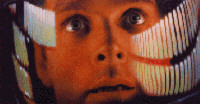 The
brevity of insect life makes it an apt stage for evolution—this theatre
of rapid mutation is now turning into a mirror. Persistent
Data Confidante demands of visitors a confession before they
can enter the site. The database of confessions will be culled so that
the most popular 10% can be mutated so by the end we can uncover the secret
of secrets.
The
brevity of insect life makes it an apt stage for evolution—this theatre
of rapid mutation is now turning into a mirror. Persistent
Data Confidante demands of visitors a confession before they
can enter the site. The database of confessions will be culled so that
the most popular 10% can be mutated so by the end we can uncover the secret
of secrets.
Looking at how wax is produced helps us understand the way information may secreted as a material substance rather than exchanged as an object of communication. With the tarsal joint of its hind leg, the bee extracts a kind of dandruff from its dorsal segments, which it mixes with saliva and kneads into wax for the walls of the hive.
In a site such as Rose Stasuk’s Pocket Protector, participants extract images that are scaled and treated until they can be inserted into the image layer and contribute to a collective work.
What better example of what has now been celebrated at every opportunity—the hive mind! For its wired prophet, Kevin Kelly, the emergence of distributed computing enables forms of intelligence to develop that transcend individual consciousness. He offers us a Faustian bargain—to forgo our sense of self for a greater collective buzz.
Despite the millenial appeal of the swarm, we must accept that a decision to enter the hive, either fantastically in art or through banal everyday decisions such as buying a mobile phone, entails some kind of loss. You can’t re-format the drive without destroying the data.
David Blair’s WaxWeb sits very much in the interstice between the old and the new—I and we. The basic story concerns an earth haunted the future dead, as seen on bee television. In the course of its web life, this narrative evolved from an authorial vision to a collective Waxmoo.
Like all metaphors, insects provide only part of the picture, and as a transitional web site, WaxWeb grants a central role to the missing element: the artist him or herself. The beekeeper hero wanders through NASA like a terrestrial astronaut, attuned to the alienating effects of the technological edifice.
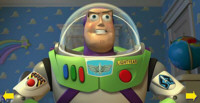 His
presence evokes older more paranoid images of insects, such as Kafka’s
Metamorphosis.
Think back thirty years to the last great humanist movement, when it was
still possible for a popular author like Robert Pursig to use insects
as a spectre of totalising technology.
His
presence evokes older more paranoid images of insects, such as Kafka’s
Metamorphosis.
Think back thirty years to the last great humanist movement, when it was
still possible for a popular author like Robert Pursig to use insects
as a spectre of totalising technology.
Around this time emerged the singular icon of a human trapped inside the insect. Dave Bowman from 2001: A Space Odyssey is a worker bee attending to his intergalactic hive—that is until it decides he is no longer needed. The ensuing struggle with the very technology that gives him life is economically rendered in the image of a face behind glass, like a bug in a jar.
A descendent of that image may be seen today in the figure of Buzz Lightyear, from Toy Story. This helmeted hero has his own more existential form of alienation as he glimpses an advertisement for himself on the television. The singular self-fashioned hero suddenly recognises himself as just another commodity on the shelf, a disposable item of the system.
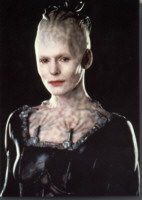 This
curiosity for the plight of human trapped inside the machine had lead
to a particularly dramatic form in Star
Trek. In the evolution of human into insect, the fantastic
species known as Borg have internalised the previously exterior viewing
apparatus. The space helmet has been now absorbed into their left eye,
which provides the screen through which they see the world as one of a
collective. The recurring object of fascination in Star
Trek is the inner life of Borg. Characters like Hugh, Picard,
Data and in the CD-ROM ourselves, find themselves absorbed into the Borg
collective partly to prove that human courage can resist the critical
mass. While Star
Trek offers a more traditional romantic opposition between
individual and collective, we can recognise the underlying equation between
the crew of the Enterprise itself and insects who diligently pursue their
duties for the good of the whole.
This
curiosity for the plight of human trapped inside the machine had lead
to a particularly dramatic form in Star
Trek. In the evolution of human into insect, the fantastic
species known as Borg have internalised the previously exterior viewing
apparatus. The space helmet has been now absorbed into their left eye,
which provides the screen through which they see the world as one of a
collective. The recurring object of fascination in Star
Trek is the inner life of Borg. Characters like Hugh, Picard,
Data and in the CD-ROM ourselves, find themselves absorbed into the Borg
collective partly to prove that human courage can resist the critical
mass. While Star
Trek offers a more traditional romantic opposition between
individual and collective, we can recognise the underlying equation between
the crew of the Enterprise itself and insects who diligently pursue their
duties for the good of the whole.
Looking back now over the depiction of insects in recent media, we can discern two opposing positions on entomorphosis. The utopianism of the small screen would have us lighten the load of individualism—to pool our creative resources and make the honey of collective art. In the more paranoid big screen, such assimilation represents a betrayal of self, with its fragile allegiances to friend, family and home.
These voices can be heard everyday as we make choices about going online. It’s the question of our time and the insects are our question marks.
Resistance is futile, not.

Copyright held by author Kevin Murray
For permission to reproduce this article, please contact Kevin
Murray